#What is Capacitor
Explore tagged Tumblr posts
Text
https://www.futureelectronics.com/p/passives--capacitors--ceramic-capacitors--multilayer-ceramic-capacitors/cl10a226mq8nrne-samsung-electro-mechanics-3334034
Multilayer ceramic capacitor manufacturers, multilayer ceramic chip capacitors
CL10 Series 22 uF 6.3 V ±20% Tolerance X5R SMT Multilayer Ceramic Capacitor
#Multilayer Ceramic Capacitors#CL10A226MQ8NRNE#Samsung Electro-Mechanics#manufacturers#Multilayer ceramic capacitor#MLCCs#Capacitors Ceramic#Ceramic capacitor values#what is capacitor#Ceramic chip capacitors#Energy storage#High voltage
1 note
·
View note
Text
https://www.futureelectronics.com/p/passives--capacitors--aluminum-electrolytic-capacitors/uwt1v101mcl1gs-nichicon-6381396
Chip Aluminum Electrolytic, Audio capacitors, Multi section capacitor
UWT Series 100 uF 35 V 1 kHrs 105°C SMT Aluminum Electrolytic Capacitor
#Capacitors#Aluminum Electrolytic Capacitors#UWT1V101MCL1GS#Nichicon#Chip#Audio capacitors#Multi section capacitor#Low ESR High Reflow Electrolytic#Axial electrolytic capacitor#Reforming#What is Capacitor#electrolytic capacitors
1 note
·
View note
Text
Multilayer ceramic chip capacitors, MLCCs, High voltage ceramic capacitors
CL31 Series 10 uF 50 V ±10 % Tolerance X5R SMT Multilayer Ceramic Capacitor
#Samsung Electro-Mechanics#CL31A106KBHNNNE#Multilayer Ceramic Capacitors#multilayer ceramic chip capacitors#MLCCs#High voltage ceramic capacitors#What is capacitor#ceramic chip capacitors#Capacitors#types of multilayer ceramic capacitors
1 note
·
View note
Note
if they were robots would they be called cogsley and capacipult?

#i actually bought a vintage travel radio at a thrift recently and when i cracked it open to see why it wouldnt power on i discovered that#the entire electrolytic capacitor was missing! so that was cool. not sure what im going to do about that#c&c asks#anyways
78 notes
·
View notes
Text
DELOREAN LEGO SET DELOREAN LEGO SET DELOREAN LEGO SET DELOREAN LE
#guess what I got for Christmas#and immediately tore into the moment I had time#actually so happy#it’s been so long since I’ve got legos#oh it’s beautiful#it’s the one with the glowing flux capacitor#that can change to be all 3 movies#EEEEEEE#already 4 bags deep#taking a break#but still#very excited#back to the future#bttf#bttf legos
7 notes
·
View notes
Text
While we're in the prep phase for the Crusader...
...let's go through the Ideas Archive, explore the stuff that's shelved, canned or otherwise not happening right now. This'll be the new pinned post, so I'll use this as a place to put everything I'm currently working on, and what I might do at some point.
Current:
The Crusader, a mix of Burns Double Six, PRS CE24 and Rickenbacker 4001, combined with influences from Hamer, Gibson and Fender. Note: this build is currently in the wood prep phase (stripping pieces of mahogany and sapele door for use in the guitar body and neck) as of 21/11/2024, and will likely take a year at my current progression rate.
Shelved:
Fender Marauder Build (yes, I still want to do this. The Crusader evolved from this, so it's still on the cards)
Casino Humbucker Mod
G6122 Country Gentleman '62 Style
Crest Replica (NEW!)
Telecaster Bass VI (kit body, custom neck)
Lennon Les Paul Jr. Replica (kitbash)
Höfner Violin Bass from scratch
Canned:
Lerxst 355 Replica
Acoustic Rickenbacker 360/12C63
Telecaster-Shaped Red Special (TSRS)
Plausible:
A non-specific doubleneck.
Resonator acoustic (kit build)
Completed:
Fretless Stratocaster
Cherry XII/Tele-Shaped Rickenbacker (TSR)
So, let's review top to bottom.
The Crusader:
I don't need to explain this much, I've already made a long-ass post about this. As said above, it's a mix of a Burns Double Six, PRS CE24 and Rickenbacker 4001 combined with influences from Hamer, Gibson and Fender.
The design is set in stone, aside from the exaggeration of the upper horn. You'd understand if there was a picture around here of the Burns. In the meantime, I'll get on with describing the others.
Fender Marauder Build:
Not the wackiest idea here, not by a long shot. As previously described, the Marauder is the culmination of Fender's offset guitars, featuring the switching of a Jaguar, the lead-rhythm circuit of a Jazzmaster, parts of the trem system of a Mustang, modified to fit with the pickguard and general aesthetics of a Jag. It even gave the Starcaster, the only semi-hollow by my reckoning that Fender still produces, it's headstock, something Fender afficionados call the "running shoe", at least, that's what my aunt calls it. Considering the contour gets filled in by paint, it's not hard to see her point.
The issue with doing this one is that barely anyone does Marauder vibrato plates. And to do this from scratch? Yeah, I need to find someone who would do the specific metal pieces I'd need, that being the Jag-style metal plate for the lead-rhythm circuit, the switch plate for the pickup switches, the extra long control plate, and that Marauder vibrato plate.
Yeah, if I ever find somewhere that does metal parts out of aluminium or something, I'm gonna get them to do the metal parts of this. Next item on the list!
Casino Humbucker Mod:
This one should be self-explanatory - take an Epiphone Casino, stick some P90-sized humbuckers in there. The only caveat is that they have to be hidden and mounted via dogear P90 covers, which isn't too much of an ask; this guy in Manchester does custom pickups, even hand-winds them. Certainly sounds appealing, may go for those. Next one!
G6122 Country Gentleman:
Yeah, uh... this one's shelved with good reason.
For context, the G6122, more commonly known as the Country Gentleman, is one of Gretsch's most famous guitar models, up there with the Duo-Jet, the Tennessean (now Tennessee Rose) and the one that Malcolm Young gutted and modded for his purposes as the rhythm guitarist of AC/DC. Gretsch list it as the "Jet" but I have no clue if that's a different model to the Duo-Jet or it's a variation, or whatever.
My aim with this would be to make as accurate a recreation of the Country Gent as I could with the documentation and information present on the internet. That means making it with 3-ply maple veneer top, back and sides, utilisng the thumbnail inlays on an ebony fingerboard, slotted for 24.6" (24.75" if you measure from the middle of the nut), with the same style of tuner, the little plaque on the headstock, the vinyl/leather pad on the back of the body covering a backplate access hatch, and all around trying to recreate this mad thing.
The only downside is the cost, because I'd need to source TV Jones Filter'Trons (not hard), maple veneer (harder), Grover Imperials or lookalikes (very hard!), and figure out how to make a veneer press, and how to shape the slightly arched top and back in a 3-ply veneer, not to mention the Bigsby, all the spare parts, the flip-up foam mutes that Jimmie Webster came up with (and also patented).
In short, the entire project is shelved. For the foreseeable future, until I can source all this stuff myself. Onto the next one!
Crest Replica:
This is a new one, inspired by an admittedly newfound appreciation for the Gibson Crest.
...oh right, I should explain what that is.
The Gibson Crest, as a name, refers to 2 different models, respectively produced around the late 1950s to early 1960s and between 1969 and 1972, with a one-off model of the latter style produced in 1983 for that year's Winter NAMM show. Said model is in the possession of guitar collector and YouTuber Trogly, who runs the eponymous Trogly's Guitar Show on YouTube. At first, I thought he was a bit of a knob, or at least a bit naïve, but as it turns out, his show's a good way to pass the time, and satiates the GAS (gear acquisition syndrome) that guitarists seem to get pretty damn often (as far as I know).
The former is estimated to have been produced a total of no more than six times, each custom orders put in by Gibson salesman-clinician and budding guitarist, Andy Nelson. Due to the nature of being entirely custom orders, no one knows the exact specs as they would obviously vary between examples as each guitarist would want something unique.
The body shape is assumed to be reminiscent of a similar model that Gibson were producing around this time: the L-5CT, that being a jazz archtop around the thickness of a Gibson Byrdland, but with a Venetian cutaway, a singular humbucker, a toggle switch next to the cutaway on "deluxe" models (models with 2 pickups as stock) and a trapeze tailpiece paired with a "floating" or freely moveable bridge.
One example of the original Crest, however, had a thinline single-cutaway body with a Florentine cutaway, as opposed to the Venetian cutaway of the L-5CT. It featured a carved spruce top, maple back and sides, with a 7-ply bound top, and a 3-ply bound back, as well as a pickguard made not of plastic, but of alternating dark and light plies of maple.
Now, that's interesting, because (and this is a personal side tangent because this guitar is so very unknown because of Google's overuse of SEO and keywords) the only other guitar Gibson produced with a wooden pickguard that I can think of is the Gibson The Les Paul, produced between 1976 and 1980, and that was only because the way Norlin-era Gison constructed these things, everything was either wooden or metal, with plastic being used as little and as sparingly as possible. The switch tip was rosewood, the binding for the body was rosewood, the veneer on the headstock was rosewood as opposed to holly, the knobs were rosewood, the pickup rings were rosewood. About the only thing I can find that wasn't wooden or metal is the inlays, which are actual abalone, and the binding for the headstock, which appears to be plastic, though this might not be the case.
Point is, the guitar was designed with one main principle in mind: "Can it be rosewood? Yes? Make it rosewood." That's why they now go for around £35k and rarely ever sell.
But anyway back to the Nelson Crest. Yes, that's what I'm calling it, it's better than calling it Crest 1 or Crest Custom. The example I'm drawing from here had bound f-holes, was stained cherry red like most of the ES models around the time, and had an HS pickup layout, with the usual number of volume and tone controls, and a toggle switch in the usual mounting place for an ES model guitar, that being near the treble-side f-hole.
According to the source I'm getting all this from (an article on the Gruhn's Guitars website), it also had a Switchmaster tone switch and was wired for stereo output. The floating bridge, as it was an archtop, was mounted on a rosewood "foot" which was inlaid with mother-of-pearl decorations. The bridge itself, meanwhile, was your bog standard late '50s, early '60s Gibson ABR-1 without retaining wire for the saddles, while the tailpiece has the diamond ornamentation seen on a Casino/ES-330 while also incorporating a shield and coat-of-arms motif.
This motif is continued on the absolutely gigantic headstock, which had individual Grover Imperial tuners, and an inlay featuring a coat of arms with three Moorish crescents on the shield. The fretboard is given the top-level treatment of the era, as is to be expected of a custom build, with 3-ply binding all-around, and Super 400 inlays up to the 17th fret, unsurprising for an archtop. The truss rod cover, meanwhile, is a sort of merger between the typical shape for a Gibson, and the art deco movement which was starting up in the early '60s, with it being a trapezoid interpretation of the standard Gibson bell shape.
This is one of the few images I can find of the original style of Crest, in all its resplendent late 1950s glory:
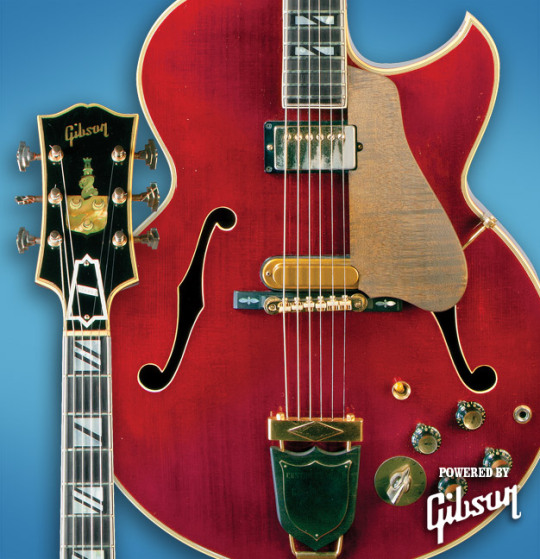
As you can see, it's basically everything I mentioned above, down to the cherry red stain.
So, that's the Nelson Crest, in all of its custom and stupidly insane glory. It'd be an interesting challenge to replicate that thing, but that's not the one I want to replicate, not by a long shot.
The Crest that I do want to replicate, however, is more reminiscent of a short-neck ES-330 or, to be more conforming to normality here, the Epiphone Casino. This has its own subsets, referred to as Crest Gold or Crest Silver, for the style of the hardware, those being either gold or "brushed silver". Assuming I was mad enough to build this, I would have to either source vintage-accurate parts or get someone to make them custom.
As you can probably guess, neither sound appealing! However, ignoring that, let's get down to business. What is the Gibson Crest, in this latter format?
The Gibson Crest, in the 1969-72 styling, is a double-cutaway ES-style guitar, as you can probably guess. Now, a double-cut ES-style isn't surprising, both CMI and Norlin loved making those. The surprise comes from the features, starting with the short neck, with the join at the 15th fret. Now, normally, that's weird for an ES-style, they all have long necks, with a meeting with the body at the 19th fret. Why does this one have such a short neck?
Well, it's because it's a hollow-bodied guitar, like the ES-330 or Casino. Then again, that is no excuse, considering the ES-330 and Casino both had long necks at this time, even if the Casino returned to the short neck, dragging the 330 along with it whether it liked it or not (kinda miffed about that, I like upper fret access, taking it away on an electric guitar like the Casino is just annoying).
But anyway, the Crest has this short neck, and that's where the similarities to most ES models end. The toggle switch is placed where the first iteration of the 347 would place the coil-split switch, that being the lower horn, and that's about it for known similarities, with the other features being more reminiscent of the original Nelson Crest rather than an ES-330 or similar guitar from Gibson/Norlin.
Let's start with the pickups, which are mini-humbuckers, most certainly an interesting choice; apparently, the reason they chose P90s as the pickups for the 330 and Casino is because it was a "budget" model, and not because they were fucking cowards. That last bit's not important, though, so we can come back to it at a different time.
As with the Nelson Crest, the Crest Gold and Silver have a floating bridge akin to an archtop, though I cannot for the life of me remember if they're an ABR-1 like the original, or a pre-compensated bridge. It doesn't much matter either way, because the fact of the matter is that this guitar has some nice details to it. A 7-ply bound top, with a 3-ply bound back separated by a decorative strip, and a large heel cap which has a strap button screwed into it.
The electronics are the interesting thing. As noted above, the toggle switch was placed in the location where an ES-347's coil-split switch went, which may even be where they got the idea for that, but as is also noted above, the thing has 2 mini-humbuckers with individual volume and tone controls, and treble-side adjustment screws that go through the pickguard.
None of this is nearly as impactful as what the thing was made of, though, because I have been keeping that bit entirely shtum for surprise factor. Y'see, the Crest was made almost exclusively out of Brazilian rosewood veneer, which, for a time, was entirely phased out of Gibson as a wood option, before even becoming a protected wood by the Washington Convention. Trade in it is restricted, even now, and that means it is incredibly hard to get hold of it, even in veneer form.
Does this mean I am shit out of luck? Well, if I wanted to recreate the thing using the exact same wood, yes. If, however, I wanted to recreate the guitar with just any species in the family Dalbergia, rather than specifically Dalbergia nigra (note: that's the scientific name for Brazilian rosewood), I am not, in fact, shit out of luck, as most other species of rosewood (any wood in the family Dalbergia) is not restricted, and has not been under restriction for almost 5 years.
Here's a photo from Gary's Classic Guitars in case you were having difficulty visualising this thing:
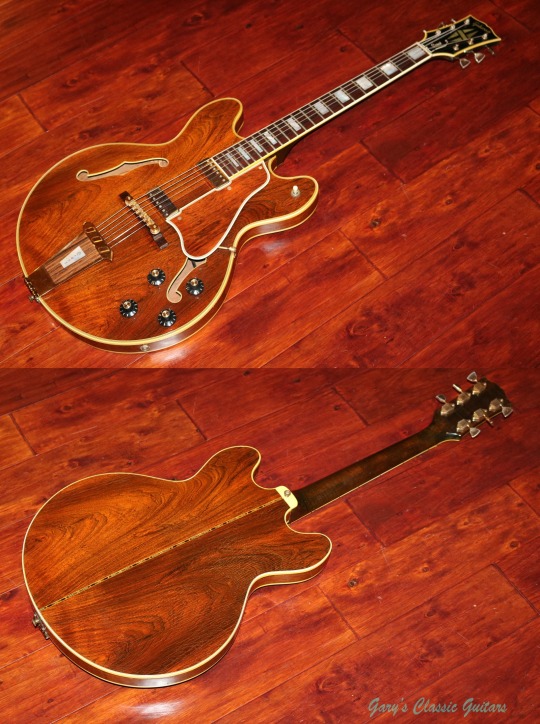
I'll be including images like these for projects that are either replicas, or I feel need the image in some way or another.
So, the rosewood veneer isn't a problem. Why is it still a shelved project, then? Well, the fact of the matter is that we live in a capitalist society. Things cost money, both for the item itself and the labour required to produce it. In short, wood is expensive, and I don't have the money yet. You may notice that "too expensive" is a running theme, even in cases where half of the expense is the guitar itself.
To avoid getting depressing, let's move on (finally)!
Tele Bass VI:
So, you may be wondering, "why's this one shelved?"
The thing is, it wasn't intentionally shelved. It's just that I can't really do anything with it without finishing the Crusader first. I need fret wire, wood for the neck, a nut, and a truss rod. Not that many things, but it's also what I need for the Crusader, and in the case of that, I at least have the wood for the neck, and a nut, but that still leaves me without a truss rod and fret wire (which I also need for my acoustic because it's got fret sprout, but that's neither here nor there).
I was intending a maple neck for it, anyway, and I need maple for the fretboard of the Crusader. Maybe I'll be able to sort that at some point. Moving on!
Lennon Les Paul Jr.:
This one's hard to call "shelved" seeing as I've done jack shit with it for 3 months at this point. Do I want to do more with it? Yes, absolutely. It's just finding the werewithall to actually go do more with it. Part of it's been the stress of organising my college stuff, but part of it's also been laziness and just not being able to decide if I want to do it or not.
I'm sure you don't want me to bore you with this one, and you saw a photo of a replica on the previous pinned post, so I'll move on.
Höfner 500/1 Violin Bass Replica:
This one is very much a doozy, but it's at least sensible.
Höfner's been going for over 100 years, that's an accepted fact, something that makes sense to everyone. Their "peak" of iconicity, however, came in the form of Sir James Paul McCartney, who has used Höfner's basses since 1961. Now, since then, they've done plenty of reissues of his (two) different basses, the 1961 with its close pickups, and the 1963 with the wide, separated pickups.
So which one would I go for? That is a good question, because it's really not what I should be asking. What I should be asking in its stead is "do I want to learn Actual Violin Lutherie to make this thing", because the whole "Violin Bass" is not just a selling point, it actually is constructed like a violin. It's a chambered hollow body, like the Country Gent, but it's the size of a violin, with the construction to match, including the use of flame maple (or, to use its more apt name, fiddleback maple) for the back and sides. The top, meanwhile, is solid carved spruce.
Don't believe me about the body size? Look at this sub-model Hofner do, based on the one you can see in Get Back:

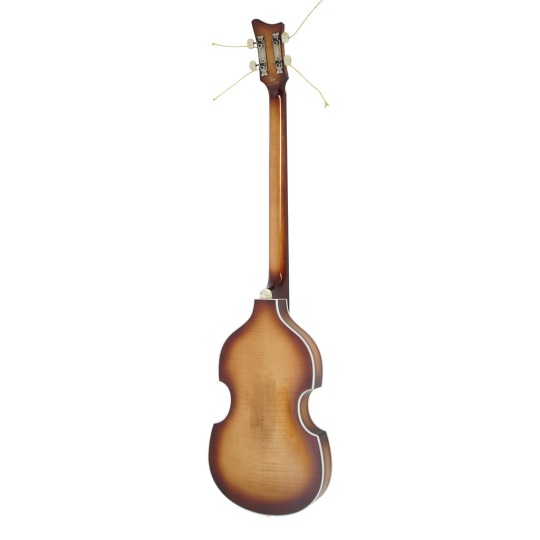
As you can see, the body is tiny in comparison to the length of the neck, especially when you compare it to an actual violin:
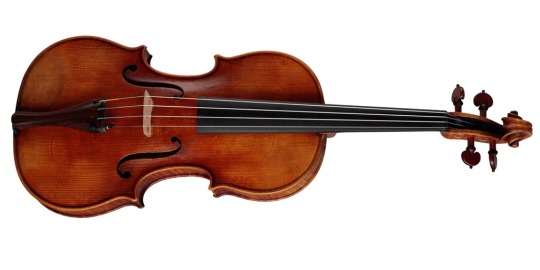
Look at the proportions on this, then look at the 500/1. Doesn't the neck seem so ridiculously long now? Anyway, that's gonna take some going at, and thus it's shelved for when I feel confident enough to actually do it, or at least to take a partial stab at it.
Now then, we've seen the ideas that I might get round to but aren't being done now for one reason or another. Let's look at the ones that won't be done at all, for one reason or another.
Lerxst 355 Replica:
To the average reader, that name's going to look like gibberish. To be honest, I don't blame you, the way it's pronounced feels like you're speaking gibberish as well. "Lurks-st". It sounds better if you try and put on a Canadian accent. Not full tilt Canadian, with all the "eh"-ing and being super polite, just a hint of Toronto.
Anyway, what's Lerxst? Or, more accurately, who is Lerxst? Lerxst is the nickname of Aleksandar Živojinović, a man known professionally as Alex Lifeson. He was the guitarist for Rush for as long as Rush had existed, until their semi-functional retirement after the death of their drummer Neil Peart. The remaining two members, that being Alex and the bassist Geddy, have performed together since, including at the Taylor Hawkins tribute concert and at the 25th anniversary concert for South Park.
Now, Lerxst has used many a guitar over the past 50 years, from that ES-335 he used in the beginning, to the large amount of PRSes he used between 1990 and 2010. His most famous, however, is the one this one is talking about: a 1977 ES-355 built by Norlin-era Gibson. It has T-Top humbuckers (named as such due to the bobbins having a slightly raised part in the shape of a T), 22 frets on a voluted neck, a 7-ply bound top (you saw me refer to this in the Crest section; 7-ply bound top doesn't mean the top is 7 plies of veneer thick, it means the binding is 7 plies thick, and is bound around a 3-ply top of maple-poplar-maple) with a 3-ply bound back, a Maestro vibrola unit, an individual set of volume and tone controls per pickup, a simple 3-way toggle, and the key part - a varitone switch, with accompanying bypass mini-toggle for the "raw" tone unmodified by the varitone.
The output jack's also mounted to the top, but considering it's an ES model, I wouldn't think that too revolutionary. So, what's a Maestro vibrola unit when it's at home? For that, we need to explain vibrato units overall.
The history starts with Clayton "Doc" Kauffman, who devised the first ever patented vibrato system in the 1930s, fittingly named the Kauffman vibrola. This worked quite differently to vibratos that we know now, as the action of changing the pitch was much more subtle, and was done through moving the arm laterally, instead of pressing the arm down to the body. The sound was meant to mimic a slide guitar (as that's where Rickenbacker's guitars originally started), but there was an ever-so tiny but incredibly crucial detail: the tuning stability was terrible. Guitarists such as John Lennon decided to replace the Kauffman units on guitars they were installed on with other models, such as the Bigsby vibrola, the second patented vibrato unit, and the first to see widespread commercial success.
The Bigsby works in a much more conventional way, using the standard we know now: push down to lower pitch, release to return to normal. Supposedly, it has terrible stability in and of itself, but that is from players who ended up being like Floyd D. Rose, who overused the vibrato of the Bigsby, requiring that they retune. The Bigsby wasn't intended for that; instead, it was only intended to provide a slight "warble" effect to playing, what some would term a "shimmering" effect.
This, in effect, is what Gibson's vibratos were meant to provide, starting in 1961 with the Sideways vibrola. I have an opinion on these: they suck, both in function and form. They copy the function of the Kauffman nearly wholesale, and the large folded up arm in direct contact with the nitrocellulose finish(!), well. Yeah, no, not for me. The Maestro, however, looks and behaves so much better. It functions like a Bigsby would, excepting that it doesn't copy the mechanism wholesale like the Sideways does with the Kauffman.
To explain this, let's go on a small side tangent about a Bigsby vs. a Maestro vibrola, because I assure you, this is actually necessary to the guitar.
The Bigsby works by loosening tension using the leverage of the tremolo arm to cause a deepening of pitch. It's kept in place and returned to normal pitch by a spring which is compressed in the action of using the vibrato unit. The Maestro, however, uses direct leverage on a bent piece of metal to cause the same loosening of tension and lowering of pitch.
This means that the Maestro, while more primitive, is easier to work with when restringing due to the fact that the strings are threaded into the tailpiece, which is then bent, changing the angle and distance between the tuners and the ball-end of the string, thus affecting the tension. The metal returning to its standard shape (because the force required to permanently change its shape has not been applied) is what returns the guitar to standard and proper tension (as long as it's been set up correctly).
The Bigsby, meanwhile, has a specific way of threading the string through the unit before sending it down the neck to the tuner and the nut. When restringing a Bigsby, there is a massive rigamarole if you don't have a Vibramate spoiler installed. You have to thread the string down from the bridge, under the tensioning bar, then up over the string bar, around it, and slot the ball-end on the tiny little post on the underside, so it can function correctly when the arm is depressed. I honestly wish I was joking about this. I have restrung a Bigsby once, and once was all the experience I needed. Never again. I heavily advocate for people to damn well use a Vibramate spoiler on their units, even if it's just because of a personal gripe.
Back to the point where we were, about... 8 or 9 paragraphs ago, the 355 generally came stock with a Maestro vibrola in 1977, so it's no surprise that Lerxst got it on his. It's even featured on the reissues from 2008:
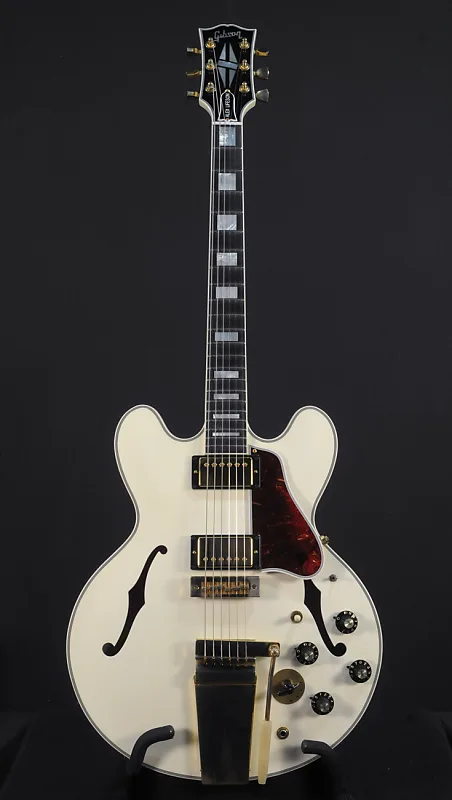
These are the same reissues that have a Fucked Up volute on the neck that's approximately halfway between the nut and the first fret, as opposed to in line with the nut. If I were to recreate this, I'd at least fix that.
So, it all seems possible, right? Then why is the build canned? Generally, it's the fact of the varitone, specifically the chokes. How, the literal fuck, do those things work. If I ever figure how they work, then maybe this will move from the can to the shelf. But right now? Canned. Completely and utterly.
Next, please!
Acoustic Rickenbacker 360/12c63:
This requires much less in the way of explaining. The Rickenbacker 360 is a famous guitar by most stretches of the imagination, soldiered on by its incarnations as the 360/12, used by George Harrison, the 370/12 used by Roger McGuinn, and the 330/12, used by innumerable amounts of famous guitarists like Peter Buck, Johnny Marr, Pete Townshend and The Edge.
But y'see, those are electric guitars. They've got magnetic pickups and all sorts of gubbins in there. My idea with this was to see if you could just... get rid of all that, construct a 360/12 in the double-bound style without that central block and all the electronics, and be left with an acoustic Ricky 12, complete with the compacted headstock and a piezo if I felt like it.
Knowing what I do about how Rickenbacker's shit is made, though, that would require making the body in the form of back, then sides, glued with bracing and then the top, with two sound holes. I'd then have to find somewhere to fit a pre-amp, and make sure that it's the usual thickness before then setting the neck in, which itself would be a 5-piece construction of maple with walnut center stripe and headstock wings, adding the truss rod(s) and the fretboard, before finally assembling the metal bits onto it.
Doesn't sound too hard, sure, but if you look at this example of what the Rickenbacker 360/12C63 looks like...
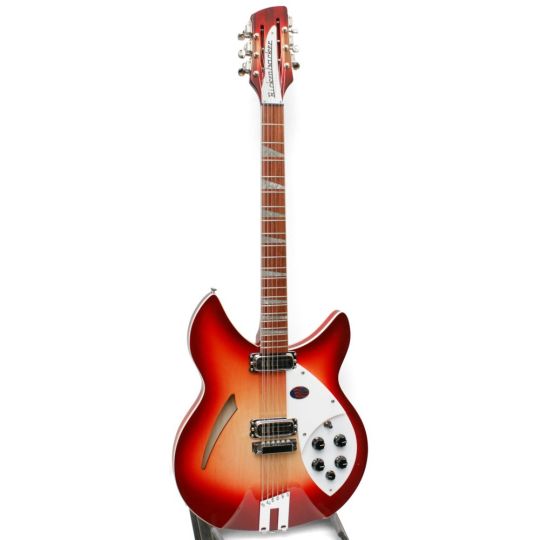
Yes, that is the entire thickness of the body. It's approximately an inch thick and not all that acoustically resonant. It'd be good as an experiment, but considering I'm debating over getting a standard acoustic 12 at some point, it's canned for that reason. Onto the last canned build, and the last build that's overall a hypothetical.
Telecaster-Shaped Red Special (TSRS):
I laid this whole thing out in a Notepad file back in May or June, as we were finishing up the Cherry XII, as a proposal of "maybe this can be the next build," but I scrapped it a month or so later because I fell into a trap I've fallen into so often it might as well be my home: I wanted to recreate a specific thing, without remembering the way that guitar is constructed, and really, what that guitar is built out of.
You see, the Red Special, built between 1963 and 1964 by Brian May and his father Harold, is a very interesting case of guitar design, in that it was designed to feedback in an appealing way. The internal cavities were actually carved out in a very specific way in order to allow for this, and most copies of the thing do the feedback, but struggle to do it exactly like his. He also has his own brand of guitars mainly made up of official replicas fitted with either a standard Strat-style trem system, that being the BMG Special, or the more accurate design mimicking the original's trem arm made of a knitting needle and a bicycle saddlebag holder.
Now, having only a Telecaster body, I couldn't recreate most of this. I mean, where am I going to put all this stuff? And the neck couldn't be slotted for 24" scale length. It just wouldn't have worked. 25", like the Harley Benton copy, maybe, but then I'd have to modify the body to allow for a 25" scale, and then rout out chambers for controls, the cavity, and the trem system's springs.
Looking back on it, I think I had a grand idea, but had bitten way too much off to just go and do it. If I ever do get it in my head to recreate the Red Special, even without a treble boost circuit or a treble boost pedal, I think I'm not going to try and start from a jump-off point, and just go at it from scratch.
Now then, we've gone through those that've been canned, let's look at the ones that aren't shelved or canned, but aren't currently in play. I denoted them as plausible above, but I might go at them at a slower rate than the Shelved builds.
Non-Specific Doubleneck:
When I say "non-specific" doubleneck, I don't mean "bland-name EDS-1275" like a Chibson or a Gear4Music or Harley Benton or anything like that.
For one, the EDS-1275 isn't the only doubleneck out there, nor is it the only doubleneck Gibson ever made. Rickenbacker made a 12/6 doubleneck 360, fittingly named the 362, as well as the 4080 doubleneck which was a bass on top and your option of a 480/6 or 480/12 on the bottom. That latter one was most famously used by Geddy Lee on Xanadu, as well as the former on A Passage to Bangkok (a song about smoking weed, if you didn't know).
Here's him with the former, in a surprising tuxedo (white with black plastics) finish:
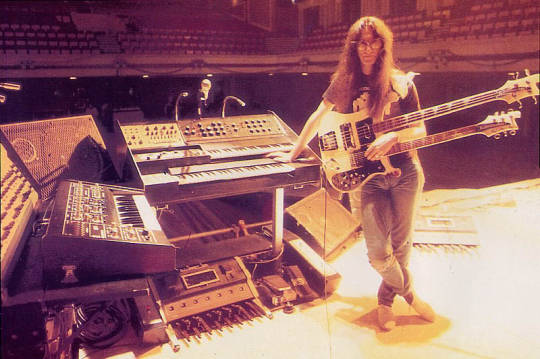
And here's him using a Fireglo 4080/12 back in 2015 for the purpose of playing Xanadu:

Anyway, that's a Rickenbacker doubleneck, but they're not the only ones to do this stuff. Fender also make doublenecks. Well, "make" is a strong term. This is the only one I know about:
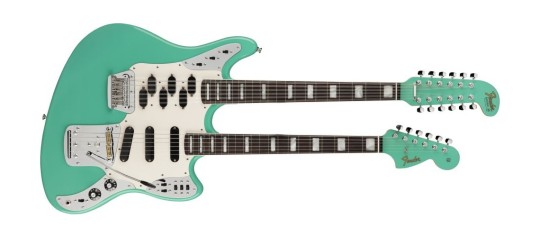
This is the craziest doubleneck I've ever seen. It's a basic 12/6, but actually No It's Not. You've got an Electric XII on top, which is the only "designed to be 12 string" guitar Fender made pre-CBS, and the Marauder on the bottom, with the vibrato merged into the pickguard, and the 5 pickup switches and the kill switch and everything that makes it the Marauder.
If I ever decide "okay, let's make a doubleneck," and then actually go through with it, I think I'm gonna take some design cues from all of these. I'll probably also chamber it so it's not uncomfortable to play for long periods of time, and just hide the chambering under the pickguards because that's a thing that could work.
Now, the other plausible idea.
Resonator Acoustic (kit build):
You know how I said kit builds were out of the question? Yeah, I didn't believe me either.
Resonators are a really cool relic of the pre-amplification era. Like, they're the step between electric guitars with magnetic pickups, and the acoustic guitars we all know, minus the piezoelectric undersaddle pickup. They work by passing the strings over a bridge mounted to a resonator cone, and when a string is plucked, strummed or otherwise makes a sound, the cone takes the vibrations and amplifies them entirely acoustically. They were originally made by a couple companies before Rickenbacker came along and invented the horseshoe pcikup and, by extension, the electric guitar.
Those companies were National String Instrument Corporation, and Dobro Manufacturing Company. The former was founded in 1927 by George Beauchamp (anyone who knows the history of Rickenbacker will know that name), and John Dopyera, a Slovak immigrant who came to America with his brothers and father in 1908, sensing that war would soon break out in Europe.
Smart move, fellas!
Anyway, Dopyera and his brothers, Rudy and Emil, soon left National to form their own comapny, Dobro. Dobro is a name with double meaning, in this case - while it's an abbreviation of Dopyera Brothers, it's also the word for "good" in a lot of Slavic languages, leading to the slogan "Dobro means good in any language!"
Due to Beauchamp's work with Rickenbacker, though, resonators fell off the radar in terms of popularity. After all, they'd figured out a form of amplification that didn't use lots of metal, so resonators ended up failing as a product. Or at least, they did for a while. Nowadays, you can find many brands producing resonators, usually for the specific tone resonators provide: rich and metallic. They're seen nowadays as bluegrass and country music instruments, but you can see people like Mark Knopfler using them for songs as well.
Now, this isn't referring to a specific kit build. I found one that's kinda an ES-style thing, with 21 frets, so that's probably the one I'd go for, not least because I like upper fret access, but it's all dependent on if I still want to build a resonator acoustic after the current build, or if I'd want to do something else entirely. It's an odd thing, my mind.
So, what now? The completed section? Eh, not exactly.
I would do a small piece on the Fretless and the Cherry XII each, I really would - God alone knows I love rambling about these builds enough, this post is testament to that on its own - but I don't need to. I made a full post about the creation of the Fretless, and made multiple posts in the course of building the Cherry XII, starting back in January and leading up to June.
But other than that? That's all there is to this post. There's nothing more I can really do in terms of explaining my ideas. I may have more ideas in between now and whenever I revisit this concept, I may reshuffle things, shelve one idea or can another. But as for everything else? It's in flux, constantly uncertain unitl we reach and observe it. I can't really say what I'll want to build after the Crusader, because I haven't finished the Crusader. Hell, I've barely started it.
Hope you enjoyed reading this. If something needs explaining further for one reason or another, tell me, and I'll try and explain it to the best of my ability.
#guitar building#lutherie#fender guitars#rickenbacker#gibson guitars#takosader's ramblings - this time into the double digits!!!#holy shit we did it#10th in the series baybeeeeeeee#anyway there's swearing in here...#somewhere i think#too many things to put in the tags so i'll hit the highlights and do the small postscripts#one - yes i'm aware that the chokes in a varitone system are capacitors and inductors#the issue's not the construction it's the values and the tones; what's the point in making a varitone if it doesn't function like it should#two - i know trogly's crest is a different variation on a normal crest#i watched his video while writing that section and clocked it because of the full hbs and the longer neck#otherwise it's exactly the same as the late '60s crest#three - if some of these feel like they came out of left field it's likely because they did#a lot of the ideas were listed on day 1 of writing this but others got added while i was writing mainly because i wanted this to be complet#comprehensiveness was another aim. yeah - as if i'll ever wring comprehensive and understandable documentation out of my head#wow this is a long post#wasn't expecting the tags to be so big either#guitar#hofner doesn't have a tag on here#but i'll put it down here for completeness
8 notes
·
View notes
Text
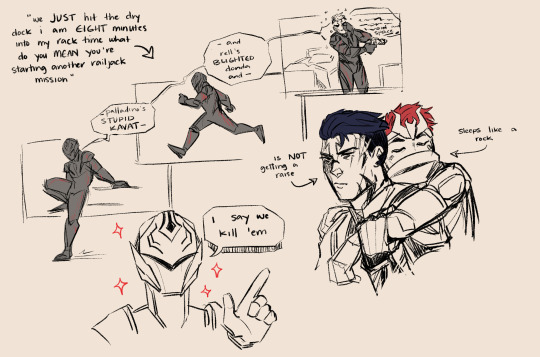
oh yanovan my best best friend
#HE USES WEIRD OATHS THAT NO ONE OUTSIDE OF THE RV HAS EVER HEARD OF#he Will take the name of rook in vain too he doesnt CARE#yanovan#save me yanovan .. and he's like. im off the clock (<- excuse. he is simply unwilling)#yano sleeps like 10 minutes a week because his maintenance standards are IMPOSSIBLE and no one else meets them.#what do you mean you don't triple check the alignment of the negentropy capacitors. amateur.#and he's also Going to accompany you on every mission. that's a given he'll be half asleep like FINE . fine where are we going. jeez.#and you were like how did you even hear me planning out a trip to the grocery store your room is a floor down and you were unconscious#and i love him#derelict doodles
18 notes
·
View notes
Text
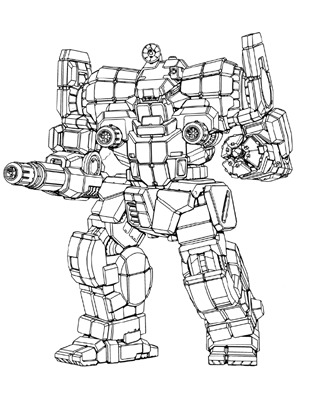
Awesome AWS-9Q (DeLacey)
Mass: 80 tons Chassis: Technicron Type G Power Plant: Pitban 240 Cruising Speed: 32.4 kph Maximum Speed: 54 kph Jump Jets: None Jump Capacity: 0 meters Armor: Durallex Heavy Special Armament: 3 ER PPC (C) 1 HAG/20 Manufacturer: Lüneburg Vehicle Corporation,Irian BattleMechs Unlimited,Technicron Manufacturing Primary Factory: Braunschweig,Irian,Savannah Communication System: Garrett T19-G Targeting & Tracking System: Dynatec 2780 Introduction Year: 3150 Tech Rating/Availability: F/X-X-X-E Cost: 8,083,800 C-bills
Overview The Awesome was designed in 2665 for the Star League by the Technicron Conglomorate and was based on the aging STR-2C Striker. While not as fast as its forefather, the Awesome is a strong assault 'Mech.
Capabilities The Awesome's abilities are nearly entirely dependent on its particle projection cannons. The AWS can withstand a severe and consistent onslaught from its weaponry thanks to several heat sinks. With one and a half tons more armor than the Striker, the AWS is more protected than even the BattleMaster. The Amazing, like any other BattleMech, has weaknesses. While it is lethal at range, it is less effective in close-quarters combat since its PPCs have a tougher time connecting with the victim. In that case, it just possesses a light weapon and a left fist to fall back on. Because of its limited mobility, it is vulnerable to flanking attacks from speedier opponents seeking to get past the PPCs. While they face arguably of the heaviest rear armor found on any BattleMech, the Awesome's lack of rear facing armaments or a weapon mount on its left arm has offered numerous MechWarriors a fighting chance. Formations of Awesomes (or even just a few) are incredibly effective and tough to stop or defeat when correctly placed by commanders who are knowledgeable of the AWS's limitations.
Deployment A basic upgrade to the original 8Q introduced in 3057, the heat sinks are upgraded to double heat sinks and are reduced to nineteen. The saved weight is used to add a fourth PPC to the 'Mech as well as a Guardian ECM Suite. Although there was some criticism for using basic PPCs and not upgrading to ER models, the 9Q proved itself during Operation Guerrero to be quite devastating. This clan salvage refit by Kerrie DeLacey swaps the left arm-mounted PPC for a Type 0 HAG/20 and two tons of ammunition, the other PPCs for Type DDS "Kingston" cERPPCs, and removes the small laser and ECM. To make room for the increased payload size, the heat sinks have been exchanged for their Clan equivalents.
History Awesomes can be found in every military House. Because the Free Worlds League has the last remaining manufacturing factories capable of generating the Awesome, it also has the most Awesomes of any of the Great Houses. Opinions on the 'Mech vary greatly within the League. Many people laud its powers, while others believe that its limited mobility is too high a price to pay for what it can do. Similar sentiments exist in the other Houses, but none of them can debate the issue beyond academics. Few commanders would turn down the opportunity to acquire an Awesome for their army. The Awesome is typically used to assault a fixed position or to breach the enemy's line of defense. They are also in demand for defensive operations. MechWarriors piloting the Awesome can expect to be involved in heavy battle and to be charged with obtaining or guarding the most crucial objectives from the adversary.
Notable MechWarriors Karrie DeLacey: A former MechTech of the Magistracy Armed Forces, Karrie fell into the mercenary life once she found that the skills she learned on the battlefield weren't as applicable in the civilian sector. After a disastrous first and only deployment with the now-extinct Dark Wolves Mercenary Company, she founded a mercenary company of her own: DeLacey's Last Resort. Extremely proud and boastful, Karrie drew up the plans for her custom Awesome as part of an argument on the proper battlefield role such a mech should have. The design trades pure firepower and heat management for greater single-point impact and a greater ability to brawl, "like something that big ought to be able to." While unconventional, it has served her well on the battlefields of the Last Resort's ugliest deployments. Still a proud Canopian citizen, Karrie pays each year to receive dossiers on elections back home, sending her ballot via the HPG network. While exceptions for the mandatory elections are made for citizens traveling abroad, she claims it "just wouldn't sit right not to."
Type: Awesome Technology Base: Mixed (Standard) Tonnage: 80 Battle Value: 2,517 Equipment Mass Internal Structure 8 Engine 240 Fusion 11.5 Walking MP: 3 Running MP: 5 Jumping MP: 0 Double Heat Sink: 19 [38] 9 Gyro: 3 Cockpit: 3 Weapons and Ammo Hyper-Assault Gauss Rifle/20 Ammo (12) CT 2 2 ER PPC RT 2 6 3 Double Heat Sink RT 6 3 HAG/20 LA 6 10 Double Heat Sink LA 2 1 ER PPC LT 2 6 4 Double Heat Sink LT 8 4 ER PPC RA 2 6 2 Double Heat Sink RA 4 2
Features the following design quirks: Battle Fists (LA)
#battletech#here's the writeup on my custom 9Q! Definitely an older and uglier machine but I think I've put work in on the right places#And yeah yeah I know I haven't put CASE around the HAG capacitors but I don't have the equipment for a factory rebuild so I get what I get
8 notes
·
View notes
Text
we did not in fact finish the lab due this morning or come even close BUT he’s giving us the next week with no late penalty bc it turns out one of the pins we were trying to use to communicate Actually Does Not Exist #slay
#personal#the engineering chronicles#it’s literally listed as an i2c pin in the tables but i overheard the student assistant say it’s not a real pin when i got into lab and was#like ?!?! and looked it up in the data sheet and for our version of this microcontroller yeah they replaced it with a capacitor for some#inexplicable reason and Left The Pin Label There. also need to stress that where it says it’s an i2c pin it IS listed under our specific#microcontroller like. technical writer of this data sheet when i catch you ‼️#so anyway. that was NOT the only issue we had even if the pin did exist it was supposed to be set for i2c2 and we accidentally set it for#i2c1 and also none of us has any clue what command to send to make the led on the other board like up but he doesn’t need to know that 🤫#*light up#even my prof didn’t know abt the secret nonexistent pin and he said no student of his has ever had this issue which actually i don’t think#is true bc i’ve been trying to avoid the b port all semester Specifically bc i remember having weird issues with the pins not working on it#last year and i suspect this is why but. yeah no consequences YIPPEE 🥳
3 notes
·
View notes
Text
Love watching videos about tech and nodding along like an idiot. Yesssss I know what a capacitor does why would I not know what a capacitor does? (Doesnt know what a capacitor does)
#i kind kf know what a capacitor does actually. it capacitates#does anyone have any cool tech channels to rec me!!!! hardware software internet whatever its all cool
4 notes
·
View notes
Text
tfw you watch so much star trek that your brain manages to craft a nightmare about a failed physics test with questions that sound believable to a total know-it-nothing
#what the fuck is a capacitor#one of the questions was "why haven't they managed to improve coca cola's recipe yet?'' to which the real answer is that it is already#perfect but i felt forced to write down smth like ''they can't artificially synthesize the compounds in spices they need''#which sounds like bs tbh#you really don't have to care#i know it's rather a chemistry question but at that moment my brain was busy with simulating me losing one of the page with answers so
3 notes
·
View notes
Text
https://www.futureelectronics.com/p/passives--capacitors--film-capacitors/106k050cs4g-paktron-capacitors-5168190
Electronic film capacitors, Type of capacitors, Film dielectric capacitors
CS4 Series 50 V 10 uF ±10% SMT Metallized Polyester Capstick® Capacitor
#Capacitors#Film Capacitors#106K050CS4G#Paktron Capacitors#Electronic#Type of capacitors#Film dielectric capacitors#devices#what is film capacitor#Polypropylene film capacitor#Plastic film capacitor#power#Capacitor manufacturer#film caps
1 note
·
View note